Whether you love or hate it, cilantro is one of the best herbs to grow at home! If you love the citrusy, peppery flavor of cilantro, you’re in for a treat. It’s so easy to grow and takes no time at all. Before you know it, you’ll have an endless supply of fresh cilantro to use in your cooking.
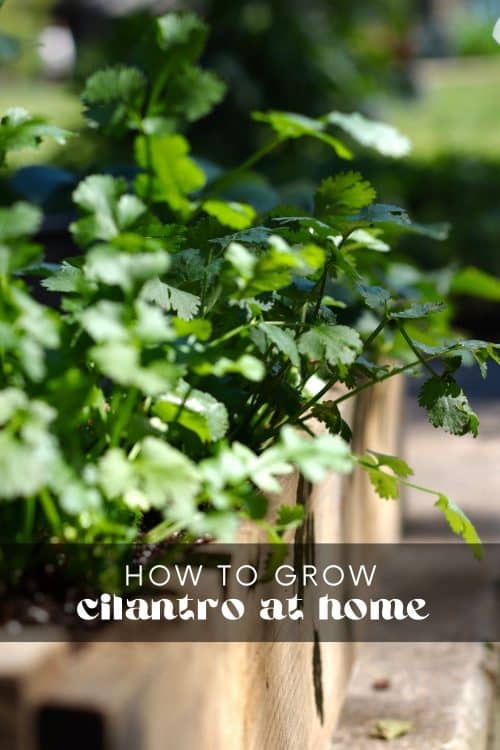
Cilantro (Coriandrum sativum), or coriander as it’s also known, is an annual herb that offers two seasonings in one plant. The fresh green leaves and thin stems are what we know as cilantro. The seeds of the cilantro plant are called coriander, which has a warm, spicy flavor. These seeds are used to grow more cilantro or are crushed and used in various dishes.
If you’re new to growing herbs, cilantro is a great place to start! Let’s take a closer look at how to grow cilantro.
Different Types of Cilantro
There are probably more types of cilantro than you think. You can pick any variety you like when growing your own herbs at home.
- Santo: This type is probably what you imagine when you think of cilantro. It’s the most common variety with bright green leaves and a strong flavor.
- Calypso: Another classic-looking variety, Calypso cilantro is pretty slow to bolt. This means it’s a good option for anyone living in a warmer climate.
- Confetti: Confetti looks a little different from your typical cilantro plant. The leaves are wispy and look similar to dill. It’s also slow to bolt and has a mild flavor.
- Culantro: No, that’s not a typo! This variety is also known as ‘broad green cilantro’ thanks to its wider leaves. It has a very strong flavor and is used in many delicious dishes.
- Long Standing: This type takes slightly longer to mature than others, but it’s worth the wait! It has big leaves and a bold flavor.
Some varieties take longer to mature and go to flower (if you’re hoping to harvest coriander seeds). Check the estimated time to maturity on your chosen cilantro variety before planting.
While all these varieties taste delicious, this guide will focus mainly on Santo cilantro.
What Is The Best Month to Plant Cilantro?
Unlike some other leafy green herbs, cilantro thrives well in cooler weather. You’ll want to plant your cilantro in late spring or the fall. It does well in either season.
If planting your cilantro in spring, wait until after the last frost has passed. The temperature must be in the 50-80°F range (10-26°C) for it to grow well. If the temperature climbs too high, it can cause the plant to bolt and go to seed. This isn’t ideal unless you’re looking to harvest coriander seeds.
In the fall, plant your cilantro at least 6 weeks before the first frost hits. This will give it enough time to mature before the colder weather sets in. If you live in a warmer climate, you can even plant cilantro in the winter if your temperatures don’t dip too low. While cilantro does well in cool weather, it isn’t frost-resistant.
How Long Does Cilantro Take to Grow?
Cilantro grows fast! Depending on the variety, it can mature in just a few weeks. The Santo variety will be ready for harvest within 50 days of planting. Some other types have a short life cycle of just 30 days!
The coriander seeds, however, take a bit longer to mature. You have to wait for the plant to flower and produce seeds before you can harvest them. This process can take around 3 months.
What Are the Best Growing Conditions for Cilantro?
While cilantro is relatively easy to grow, it does need certain growing conditions to thrive. Everything from the location it’s planted into the soil can affect its growth. Here are a few tips for creating the best growing environment for cilantro.
Soil
You’ll want to use a good-quality potting mix if you’re growing cilantro in containers. In the ground, it does best in rich, well-drained soil. Cilantro likes moist but not waterlogged soil. The soil pH should sit around 6.2-6.8.
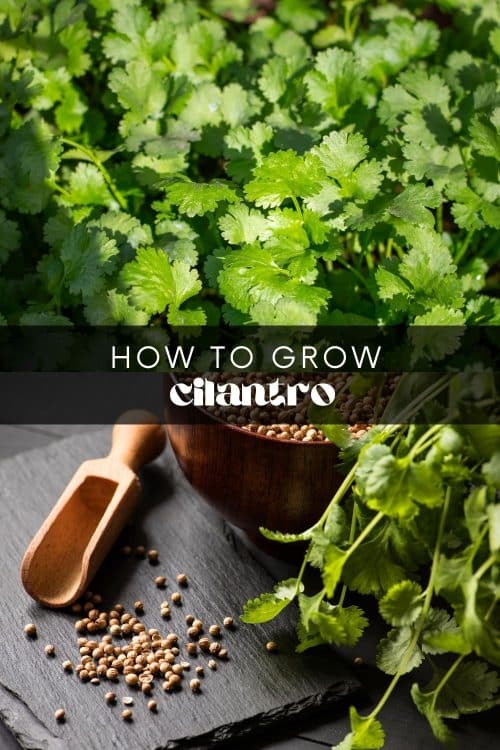
Sunlight
We want our cilantro plants to get around 6 hours of full sun daily. If you live somewhere with a hot climate, choose a spot with morning sun and afternoon shade. Too much direct sun can burn the leaves on your plant. Planting in containers is a good option for warmer climates, as you can simply move them to partial shade if needed.
You can also grow cilantro indoors. A DIY window herb garden is the perfect place for it!
Temperature
Cilantro is a cool-weather herb. It grows best in temperatures between 50-80°F (10-26°C). It’s always a good idea to consider your local climate when choosing which season to plant cilantro.
It’s important to note cilantro can tolerate low temperatures but not frost. Row covers or cloches are a great way to protect your plants from frost. On the flip side, hot weather can cause cilantro to bolt or go to seed quickly.
How to Grow Cilantro
You’ve got two options for growing cilantro:
- Directly sow seeds
- Use young plants
Most people opt for seeds, as transplanting cilantro can be tricky. Cilantro has a tap root, meaning the root grows straight down. You have to be careful not to damage the root when transplanting. You can have success with either option, though!
Here’s how to grow cilantro:
- You can sow your seeds directly in the ground or a container. Planting indoors allows you to get a head start on your growing season. Use a pot around 8 inches wide and deep per plant. The pot should also have drainage holes.
- Prepare the soil by loosening it and adding compost or other organic matter. Remove any weeds or debris.
- Plant the seeds about 2-4 inches apart and 1/2 inch deep. If planting outside in rows, space the rows about 12 inches apart. Put container plants near a sunny window.
- Water the seeds well. Keep the soil consistently moist but not waterlogged.
- Your seeds should germinate in 7-14 days.
- Succession planting will ensure a continuing supply of cilantro throughout the growing season. Sow seeds every 2-3 weeks.
- Harden indoor cilantro seedlings before moving the pots outside. The best way to do this is by taking them outdoors for a few hours at a time. Increase the total time over a week until they are hardened enough to stay outside completely.
How to Propagate Cilantro
Cilantro will actually self-seed if left to bolt and go to seed. You can also collect the seeds yourself and save them for next year’s growing season. Here’s how to propagate cilantro:
- Wait for your cilantro plant to flower and produce seeds.
- Once the flowers have dried up, remove the stems carefully and place them upside down in a paper bag.
- The seed heads will split and release the seeds after a few days.
- The seeds must dry out in a cool, dry space away from sunlight.
- Once dried, store the seeds in a labeled envelope or container for planting next season.
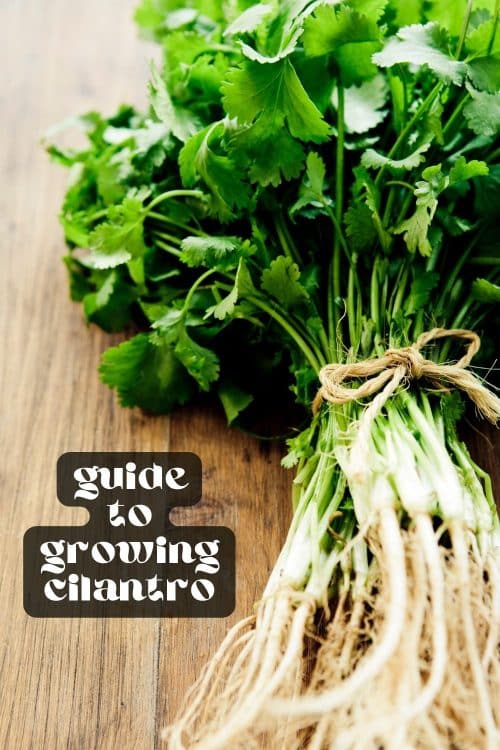
How to Care For Cilantro Plants
The start to finish for cilantro is relatively quick, but they’ll still need some care and attention to thrive. Here are some tips for caring for your cilantro plants:
Watering
The amount of water cilantro needs depends on its growing environment. Plants in containers tend to need more frequent watering than those in the ground. The key is to keep the soil consistently moist but not too wet.
Seedlings normally need around 1 inch of water per week, while mature plants need less. You’re best checking the top inch of soil weekly – if it’s dry, then it’s time to water.
Pest Control
Your cilantro plant’s natural enemies are spider mites, aphids, and whiteflies. Keep an eye out for these pests and take action if you see any sign of them. Fungus gnats are also a common problem for indoor herb gardens. There are many natural ways to solve a gnat infestation, such as repotting, insecticidal soap, and traps.
Fertilizer
Cilantro doesn’t really need fertilizer – but no one’s stopping you if you really want to use some! A well-balanced fertilizer suitable for herbs can be used once during the growing season.
Weeding
Always remove weeds around the cilantro plants. Weeds take up water and nutrients that your cilantro needs to thrive.
Bolting (Flowering)
Bolting is great for those who like cilantro seeds but not so much for those who want to harvest fresh leaves. Trim off any flower stalk that appears to encourage your plant to continue producing leaves. If it has already bolted, leave the flower heads on the plant until they are brown. You can then harvest the seeds for later use.
How to Harvest Cilantro
Your cilantro is ready for harvest once the stems have grown to at least 6 inches tall. Pinch off leaves from the upper stems and leave the inner ones alone to continue growing. Doing this also promotes a bushier plant. Harvest before the cilantro flowers, as the leaves will become bitter afterward.
Always avoid taking more than a third of the plant at a time. Otherwise, the plant may stop producing new leaves.
How to Store Homegrown Cilantro
How you store your freshly harvested cilantro will depend on how you plan to use it. Here are three different methods to try:
Storing Cilantro in the Refrigerator
This option is best if you plan to use your cilantro within a week or two.
- Place the bunch in a jar with an inch of water at the bottom. Don’t let any leaves touch the water.
- Cover loosely with a plastic bag and place it in your refrigerator’s produce drawer.
As long as you keep the water fresh, your cilantro should stay good for up to two weeks.
Freezing Cilantro
You can freeze cilantro whole or puree for later use. Place the leaves into a freezer bag and remove as much air as possible before sealing. Alternatively, blend the leaves with olive oil and freeze them in ice cube trays for easy portions to use in cooking.
Frozen cilantro will keep for up to 6 months.
Drying Out Cilantro
There are a few ways to dry out your cilantro! You can use the oven, a herb dehydrator, or hang it in bunches to dry. Some options are quicker than others, but you’ll still end up with dried cilantro either way. Store your dried cilantro in an airtight container once complete.
How to Use Cilantro
Cilantro leaves are ideal for garnishing complete meals or used as the base of pesto, dips like Tzatziki, and in dishes such as salsa and pasta. Here are a few recipes cilantro works amazingly with:
- Cilantro lime rice
- Taco casserole
- Ground pork tacos
- Butter beans with herbs
- Loaded taco fried with ground beef
- Instant Pot turkey chili
- Slow cooker chicken enchiladas
- Velveeta Queso
- Deep fried tacos
- Sheet pan steak fajitas
- Added to dog food – cilantro is a safe herb for dogs!
And so much more! No matter how you choose to use cilantro, you’ll have the best time knowing you grew it yourself.
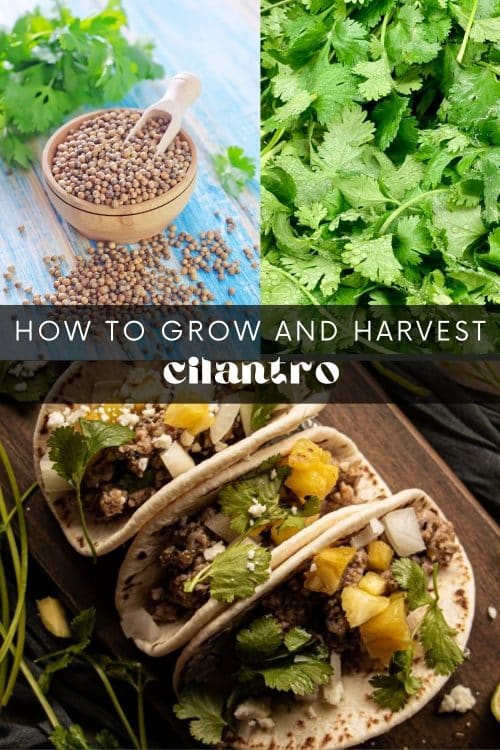
Check out these Herb Posts:
- What Herbs Are Toxic to Dogs?
- DIY Kitchen Window Herb Garden Ideas
- Herb Harvest and Preservation
- Herb Garden Ideas
- How to Get Rid of Gnats on Indoor Herbs
- 12 Best Herb Garden Plants
- 8 Best Indoor Herb Plants
- How to Grow Catmint
- How to Grow Cilantro
- How Long Does It Take Basil to Grow?
- How to Grow Mint Outdoors
- How to Grow Citronella Plants
- How to Grow Mint Indoors
- How to Grow Lavender in Containers
- How to Grow Oregano
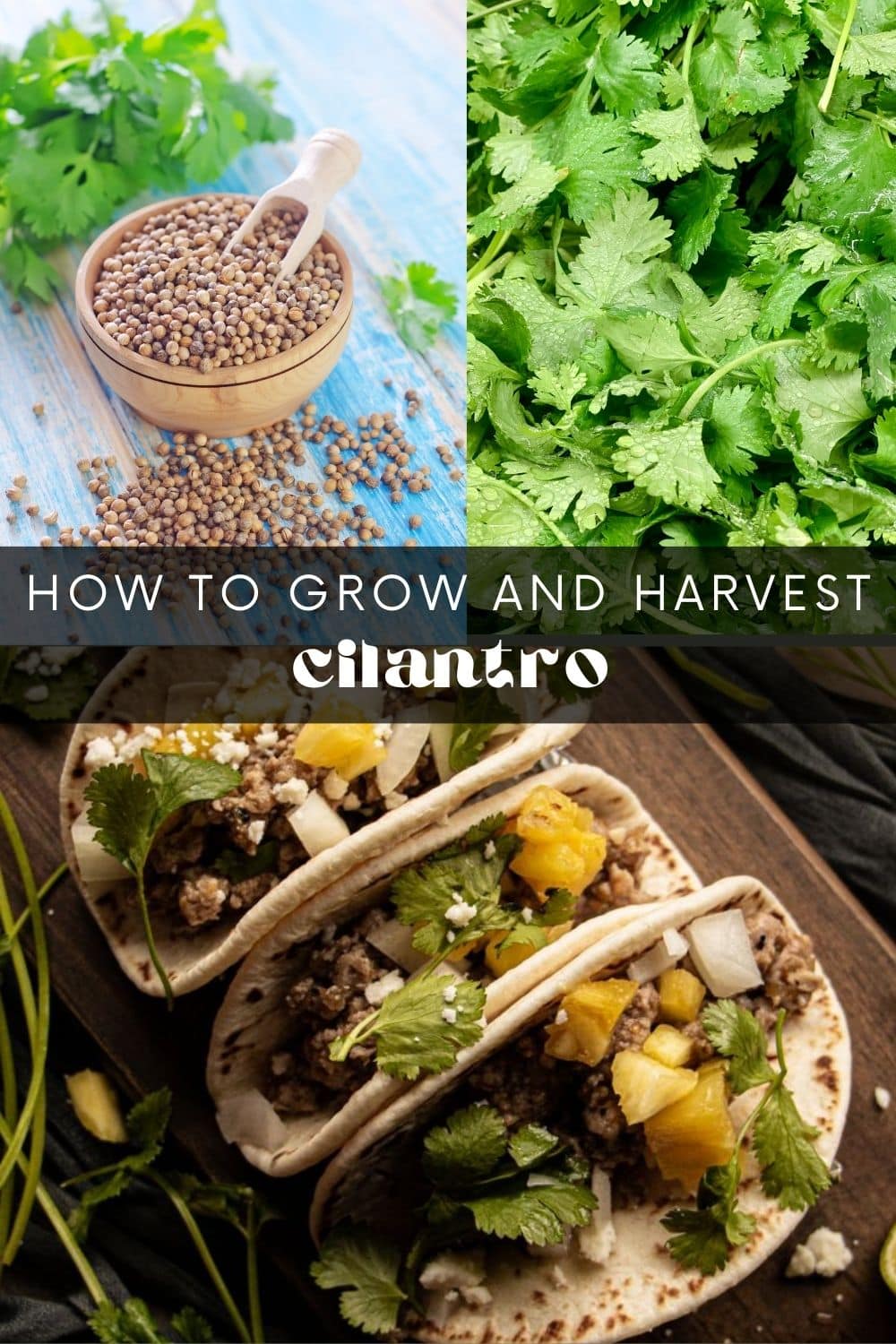
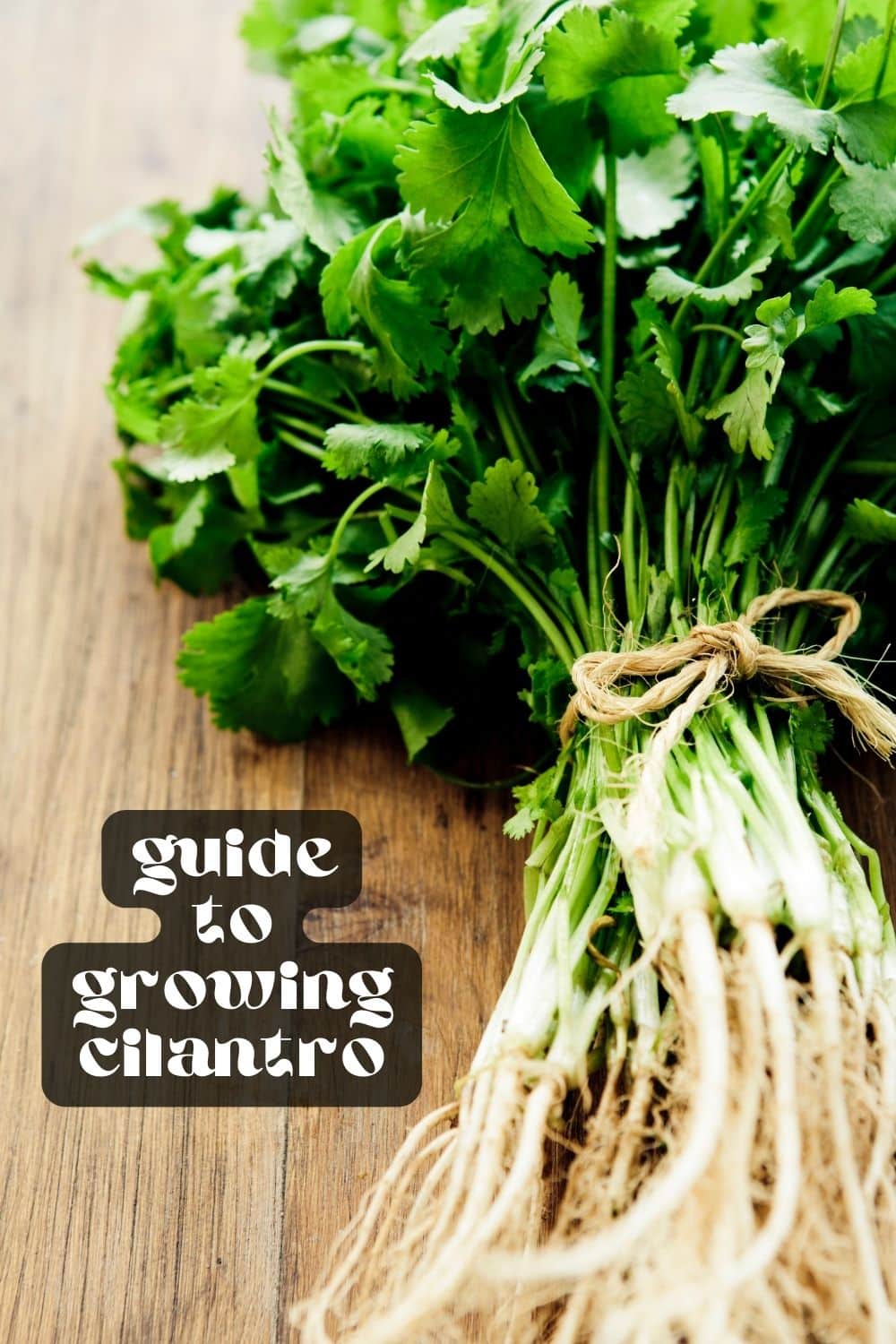
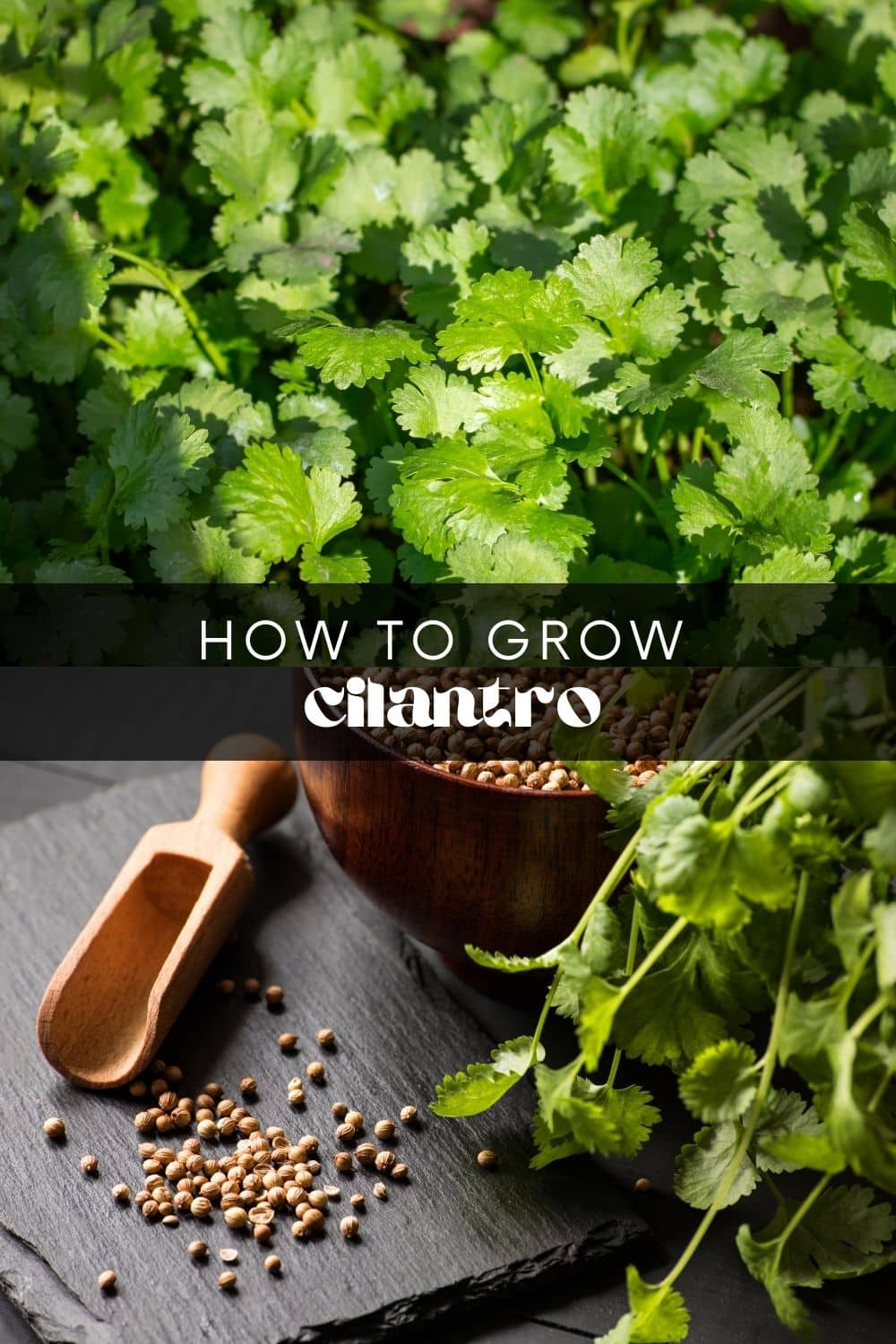
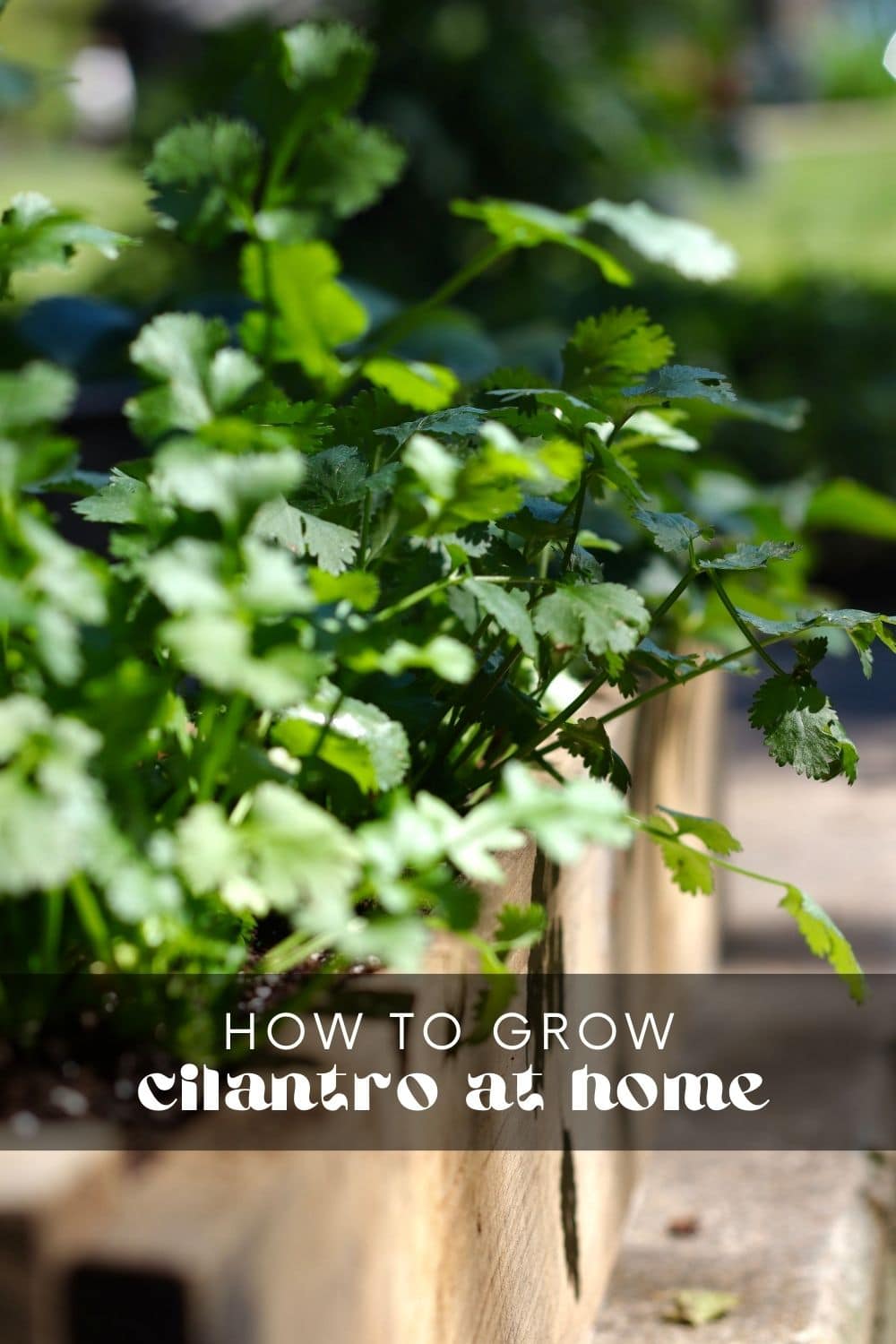





Leave a Reply